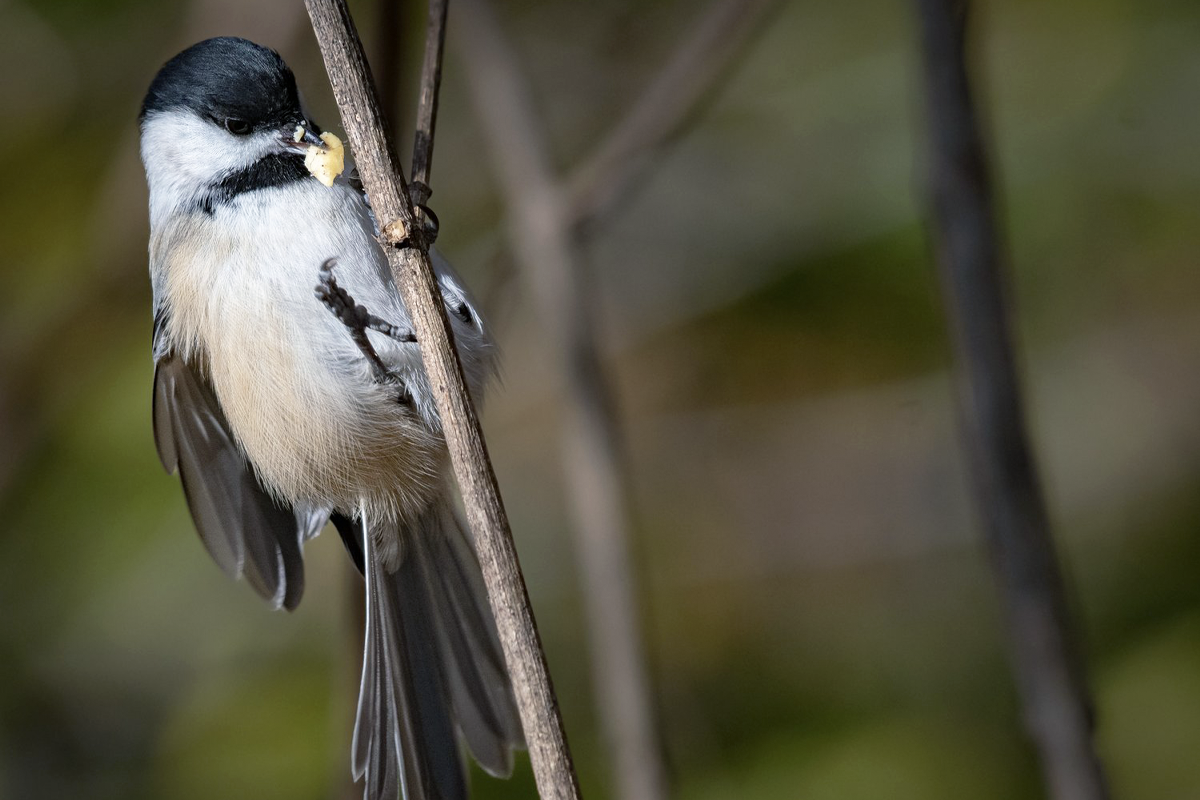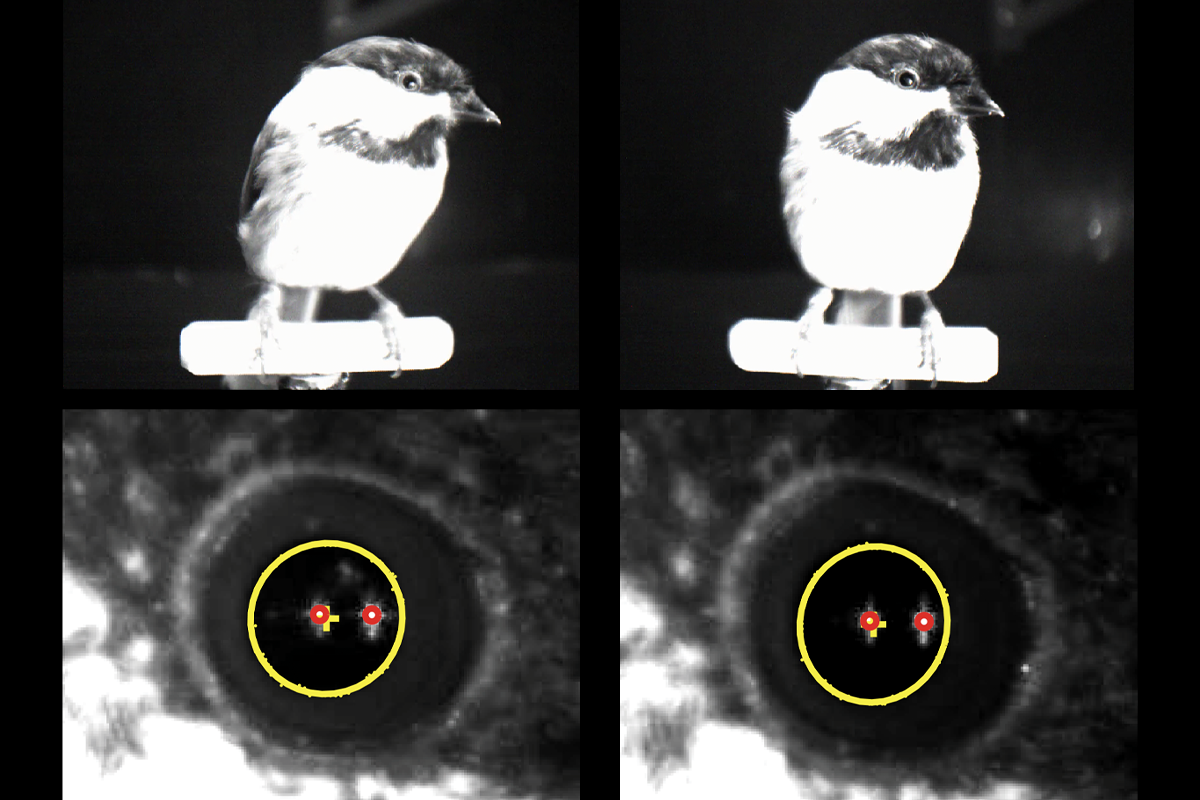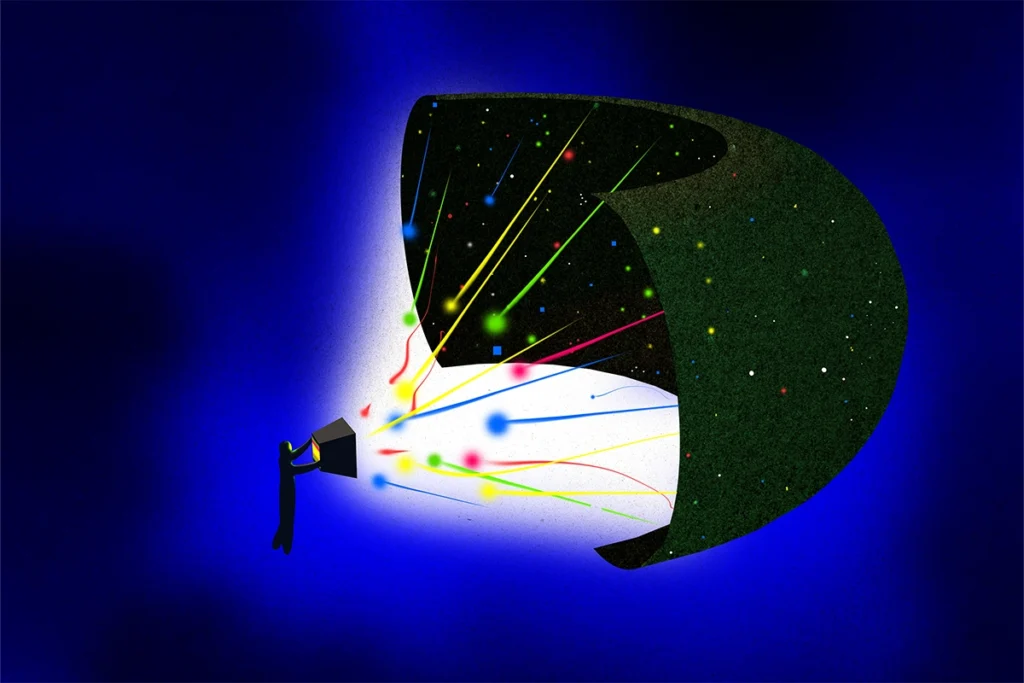
Gazing at a location from afar activates place cells in chickadees
The results help explain how the hippocampus can recall information about a place without an animal physically revisiting it.
Every year, black-capped chickadees perform an impressive game of hide-and-seek. These highly visual birds cache tens of thousands of surplus food morsels and then recover them during leaner times.
Place cells in the hippocampus may help the birds keep track of their hidden bounty, according to a study published 11 June in Nature. The cells activate not only when a bird visits a food stash but also when it looks at the stash from far away, the study shows.
“What is really profound about the work is it’s trying to unpack how it is that we’re able to combine visual information, which is based on where we currently are in the world, with our understanding of the space around us and how we can navigate it,” says Nick Turk-Browne, professor of psychology and director of the Wu Tsai Institute at Yale University, who was not involved in the study.
With each gaze shift, the hippocampus first predicts what the bird is about to see and then reacts to what it actually sees, the study shows.
“It really fits beautifully into this picture of this dual role for the system in representing actual and representing possible,” says Loren Frank, professor of physiology and psychiatry at the University of California, San Francisco, who was not involved in the work.
The findings help explain how the various functions of the hippocampus—navigation, perception, learning and memory—work together, Turk-Browne adds. “If we can have a smart, abstract representation of place that doesn’t depend on actually physically being there, then you can imagine how this can be used to construct memories.”
S
ome activity in the hippocampus correlates with gaze direction in nonhuman primates, previous studies suggest. But eye tracking typically requires these animals to remain stationary, which makes it difficult to distinguish between gaze- and place-related neuronal activity.Chickadees, by contrast, show little eye movement and instead control their gaze primarily by moving their head. This trait enabled the researchers to precisely monitor the gaze of freely moving birds.

“It’s really a well-justified model system for this question because of the properties of how the bird’s visual system works and how that lets you tease apart different contributions to visual processing in the hippocampus,” Turk-Browne says. “I think it’s really elegant.”
The birds typically look around while sitting still, trying to figure out where to go before dashing to a destination. These behaviors resemble how people navigate—and provide a behavioral readout to differentiate between moments of gaze- versus place-coding, says study investigator Hannah Payne, a postdoctoral research associate in Dmitriy Aronov’s lab at Columbia University.
“If I get out of the subway somewhere I’m not familiar with in New York, I don’t just walk,” Payne says. “First, I look around, get my bearings, maybe look at where the sun is and figure out which way I’m facing, and then I’ll start walking off purposely.”
Payne placed chickadees in the center of a small square arena and trained the birds to hop to one of the four visually identical corners in response to a light turning on in a corner and an automatic feeder dispensing a piece of a sunflower seed. After training the animals on all four corners, she turned on a particular corner’s light only after the bird first gazed at that corner expectantly. Throughout the experiment, cameras tracked head movements, and probes in the anterior hippocampus recorded neuronal activity.
Of the nearly 2,000 neurons recorded across seven birds, 62 percent activated as the birds flitted between sites, qualifying them as place cells. Of these place cells, 75 percent also activated while the birds stayed still, moving just their heads, indicating that many of the same neurons encode both place and gaze. Among cells that preferentially activated in response to a single gaze target, 95 percent showed the same place preference.
Before a bird dashes, its hippocampal neurons fire in two phases, the team found: One starts before the animal’s head movement, called a saccade, and the other occurs afterward, while the bird looks at the target location. The activity before the saccade suggests the birds were anticipating something, Payne says. “That part that was most surprising to me.”
E
ven though the two phases partially overlap, they display different firing rates, which suggests that the first phase is not entirely visual, Payne says. “On every saccade, you have a population of cells that is representing what the bird just saw, what it’s currently looking at, and it actually reacts to what it’s seeing,” Payne says. “But then you also have a population of cells anticipating where the bird is about to look next.”In a task in which the chickadees got a sunflower-seed morsel at the same site multiple times in a row, neural activity indicated the birds grew to expect the light cue. It’s unclear what the hippocampus was predicting—maybe the light cue or perhaps some anticipation of the reward—but Payne and her co-author, Aronov, were able to conclude the hippocampus represents internal as well as external information.
“Right before the bird looks at a site that has been rewarded, you’ve got this enhancement of activity that must be driven by internal information processing, because they have no other way of knowing,” Payne says.
Chickadees’ place cells also activate during food caching and subsequent retrieval, according to previous research from Aronov’s lab. A next step is to understand how this activity relates to the gaze-induced patterns, Payne says.
“I see this paper as another major step towards the ultimate goal, which is to understand the neural circuits underlying food caching and memory in the hippocampus,” Payne says.
Recommended reading

Dispute erupts over universal cortical brain-wave claim
Waves of calcium activity dictate eye structure in flies

Among brain changes studied in autism, spotlight shifts to subcortex
Explore more from The Transmitter

Novel neurons upend ‘yin-yang’ model of hunger, satiety in brain

Imagining the ultimate systems neuroscience paper
